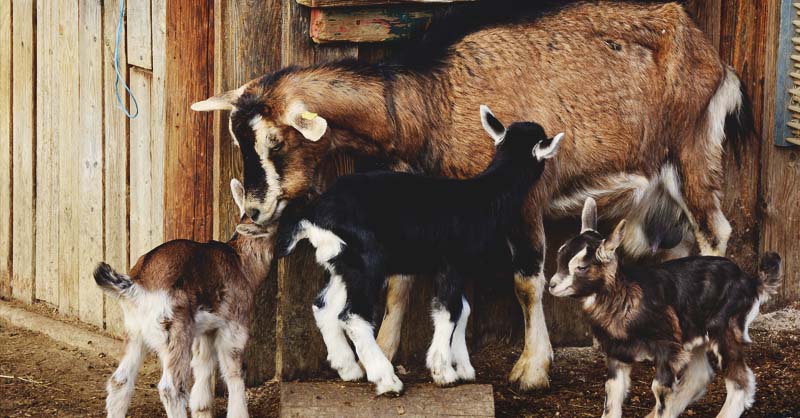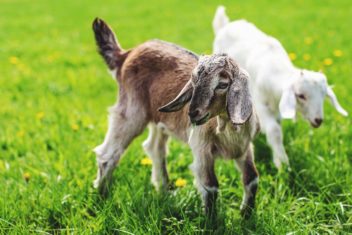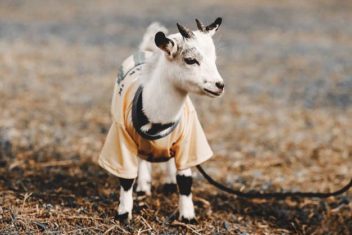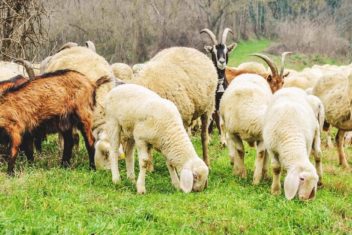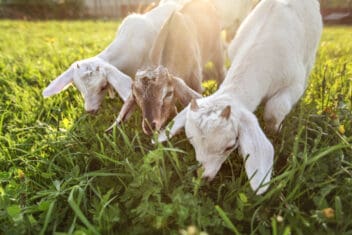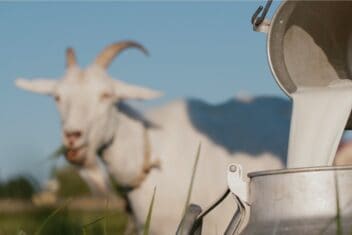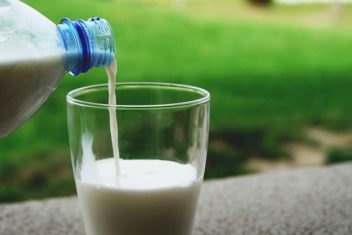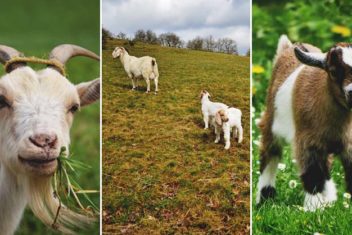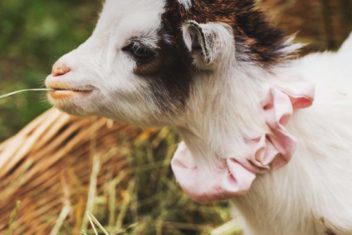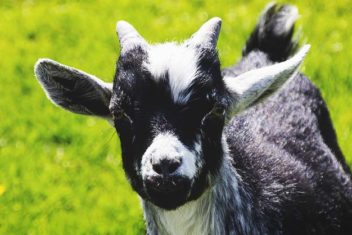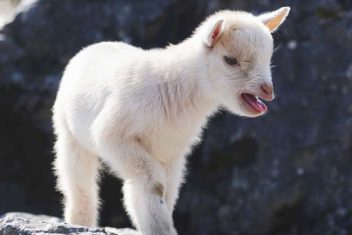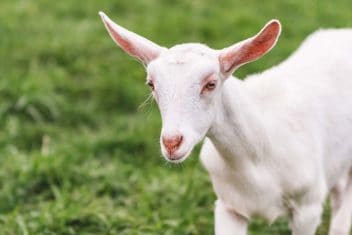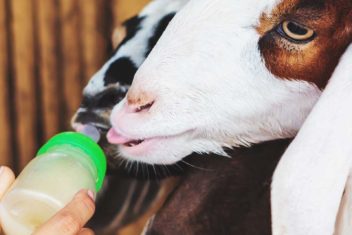Health is king for a successful dairy goat herd. When my family bought our first two does, we had much to learn but, thankfully, were spared much heartbreak because we made checking their health a top priority.
Purchasing grown does are great because you have milk immediately but require more diligence to avoid buying someone’s problematic goat.
So then, what questions should you ask upfront when buying dairy goats, to minimize the risk of sick goats? Join me as we cover 18 thorough questions in the areas of proper deworming, disease, milk health, and fertility so you know you’re purchasing prime stock.
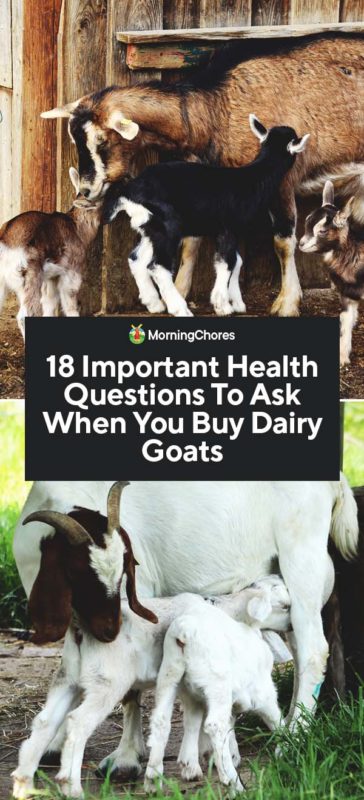
The Opening Question
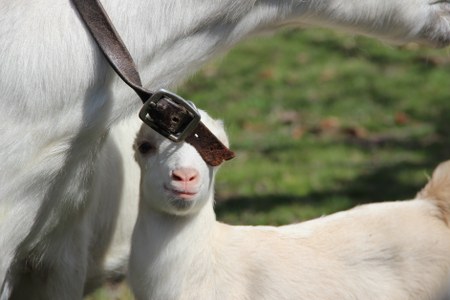
1. “May I ask why you’re selling this doe?”
There are valid reasons why someone might sell a healthy, productive doe; I sold one of the best does I ever had because I could not milk two does at that time. But beware if the seller gives you vague or health-related answers. Asking the following questions will help you discern the difference.
Questions Regarding Parasites
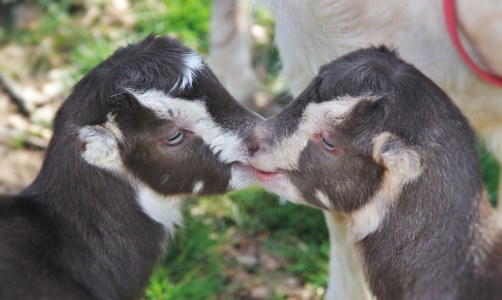
Parasite infestation refers to an animal whose immune system has been depleted by pathogens and is the top cause of illness with goats. Protocol and pasture are the best parasite prevention, so keep asking until you’re satisfied with the answers.
Protocol
2. “Please tell me about your deworming protocol?”
For chemical deworming, once a year is standard (though twice a year is even better). You may even meet goat owners who use herbal dewormers which often have their own regimen, such as twice a month, monthly, etc. At this point, the type of deworming is not as important as knowing this doe has indeed been on a deworming protocol.
Answers we want to hear: Diligence in carrying out deworming and knowledge about the parasites that were covered with the last treatment.
Answers we do not want to hear: “I don’t know,” “It’s been a while”, or any response that seems evasive or lacks information.
3. “When was this doe last dewormed and for which parasites?”
Great follow-up question if the answer to the above didn’t give you a good understanding of the seller’s protocol.
4. “Has this doe ever had bottle jaw or a severe bout of parasites? If so, how long ago?”
The crucial part of this question is “how long ago.” Most goats have one of these ailments at some point. In my experience, a doe will fully recover if her immune system was adequately supported. But if one of these conditions is a recurring issue for her, either the seller has poor parasite protocol or the doe has weak immunity.
Answers we want to hear: “No.” (Best answer), or “Yes, but it was six months or longer and she has fully recovered.”
Answers we do not want to hear: “Yes, within the last six months, and she is still recovering.”
Pasture
5. “Please tell me about your pasture set-up?”
In nature, goats are not herded into cramped, dusty pens, and rarely suffer from parasite infestation. If a similar pattern is not followed with domesticated goats, the parasite life cycle will not be interrupted and parasite overload is inevitable.
Answers we want to hear: Yes, the goats have had fresh ground in the past two years that is adequate for the size of the herd.
Answers we do not want to hear: They have stayed on the same pasture for two years, there’s a large number of goats in a small space, or worse of all, “What are you talking about?”.
What should you do if any of the answers are not ones we want to hear? Should you consider it a deal breaker? Not necessarily. I would proceed with caution while at this stage of buying dairy goats. Look for symptoms of parasite infestation such as pale eyelids, rough or “starry” coat, gauntness, etc. Better yet, bring a goat-savvy friend with you.
Sturdy and young stock may handle a little negligence, but some parasites – like barber pole worms – are silent killers giving little warning. Be willing to consider this seller as an option, but make sure to do your homework.
Questions Regarding Disease
6. “Is this doe CAE and CL free?”
CAE (Caprine Arthritis Encephalitis) and CL (Caseous Lymphadenitis) are serious diseases. Buy from a “closed herd” where the herd has been tested and only stock from CAE and CL free herds introduced. If the answer gives you any doubts, request a test be done before purchase.
Why should you be so concerned about CAE and CL? Because both diseases bring down the immune health of your herd and can infect other animals. In the case of CL, if the abscess burst on your land, the disease can contaminate your barn, buildings, and ground, risking infection to future goats on your homestead.
Answers we want to hear: Yes, the herd is closed and has been tested, or the owner is at least willing to test the doe if testing has not been done.
Answers we do not want to hear: No, the herd is not closed, testing has not been done, and there is no willingness to perform testing. Because of the seriousness of CAE and CL, I would not purchase a doe from this seller.
Questions Regarding Milk Health
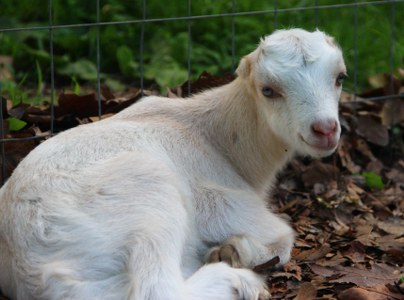
For a milking doe to be productive into her golden years, mastitis and udder longevity are our two concerns.
Mastitis
7. “Has this doe had mastitis?”
Poor health and immunity can cause a goat to have recurring mastitis (infection of the mammary system) that becomes harder to cure with each return. It also doesn’t hurt to ask if the doe’s dam, sisters, daughters, etc. have also had mastitis.
Answers we want to hear: No, or at least that the mastitis was a one-time event from which she has fully recovered.
Answers we do not want to hear: Yes, and it is recurring or she has had it recently.
8. “Has this doe ever produced off-tasting milk?”
Obviously, quality milk is our goal when buying dairy goats. Breed, age, forage (think wild onions!), and even lactation period can cause milk taste to vary, but what you want to know is if the doe has a chronic condition causing her milk to taste “goaty”.
Answers we want to hear: “Her milk is delicious! Here, would you like some?”
Answers we do not want to hear: An evasive answer or an excuse as to why you can’t taste her milk while you’re there.
9. “How much milk is she giving right now?”
Normal milk production is a sign of good health. How can you know what average production is? Breed and bloodlines will determine the average volume to be expected. For example, Nigerian Dwarfs can give a pint to half a gallon a day while a Saanen, the queen bee of dairy breeds, provides 1.5 – 3 gallons of milk daily.
Also, quality genetics where both sire and dam have good milking lines behind them will produce more milk than other does of the same breed. Taking both breed norm and quality of genetics into account will give you a good baseline for what a healthy doe produces.
10. “Are both the right and left sides of the udder about the same size and do they produce close to the same amount of milk?”
Sometimes one side will produce a little more than the other, but a huge difference in production could be an indication of mastitis.
Answers we want to hear: No difference noted or very small difference.
Answers we do not want to hear: A drastic difference, but the seller might downplay this. Ask for an explanation as to why, and also be cautious if the cause is linked to disease or infection.
Udder Longevity
11. “Is there damage to her udder?”
Some does have only one producing side of their udder, either due to a birth defect, injury, or past mastitis. If she seems healthy otherwise, she can still be a good doe for you but it depends on what is best for your unique dairy herd goals as to whether or not you proceed with the purchase.
12. “How much milk did her dam produce and, if possible, her parental and maternal grandmothers?”
Very useful information if high milk production is important to you.
13. “Does this doe and her dam have proper udder attachment?”
By udder attachment we mean the ligaments supporting the udder are strong, and the udder is high and tight against the body. Suitable udder attachment means she will have a long milking life, and not be dragging her udder when she is only six years old.
Answers we want to hear: Yes, her ligaments are tight, and so are her dam’s (if the owner has this information available).
Answers we do not want to hear: Udder is floppy, misshaped, or teats do not point straight down.
What should you do if a question on milk and udder health wasn’t what you were hoping for? Based on my experience trying to treat chronic mastitis, I would not buy a doe with such a history. As for other considerations, this will come down to preference and your milking aspirations.
Questions About Fertility
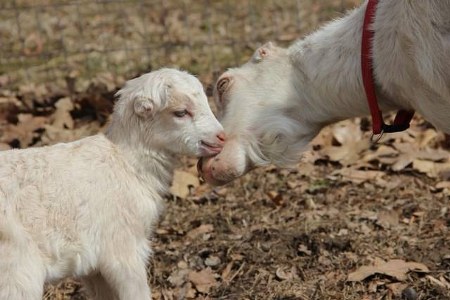
“Right or wrong” answers to our following questions depend on what you envision for your dairy herd. The first two questions are essential since an infertile doe cannot produce milk, while the last three are for what you can expect from her kids.
Pregnancy
14. “Was there ever a breeding season when she did not settle? If so, how long ago?”
Breeding season for dairy goats is from fall to early winter. If you have a buck, a “no” to this question gives you grace space, though it is still important to know why she did not settle (meaning fertilization did not take place during the entire breeding season). If you are considering artificial insemination, however, this may create challenges.
15. “Has she miscarried a pregnancy?”
Does will, on occasion, miscarry their kids. If she is still young and has since had a healthy delivery, there is likely little cause for concern. Repeat miscarriages, however, may be enough to shut down the deal, as no kids mean no milk.
Birth and Kids
16. “Has she ever had birthing complications?”
While hardy mothers, most does need “midwifery” help at one point or another. If “dramatic” births are this doe’s norm, it will be helpful to be prepared.
17. “How many kids did the doe have this past spring? Is this her norm?”
1 to 5 kids is possible for goats, with twins and triplets being the norm. Again, the importance you place on a prolific doe when buying dairy goats is up to you.
18. “Have you kept any of her kids?”
Great way to find out if the owner thinks her kids are keepers. If they do, then she probably throws sturdy kids.
After raising dairy goats for 15 years due diligence is the greatest lesson we’ve learned in having a successful, rewarding dairy herd. It takes hard work, research, and sometimes walking away from a deal when buying dairy goats. But our peace of mind and our does’ health are worth it every step of the way.

